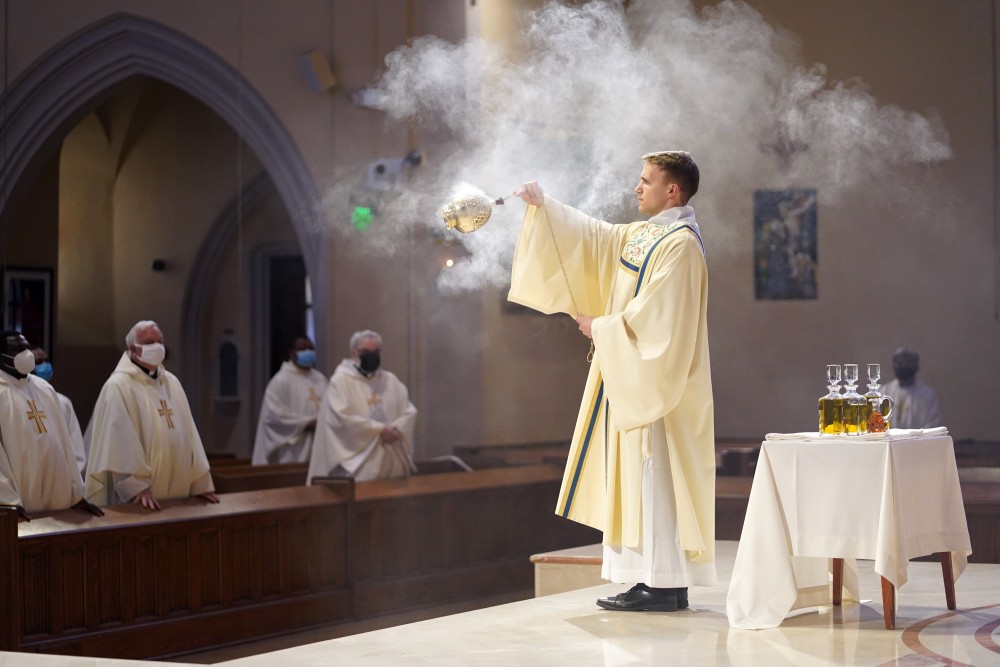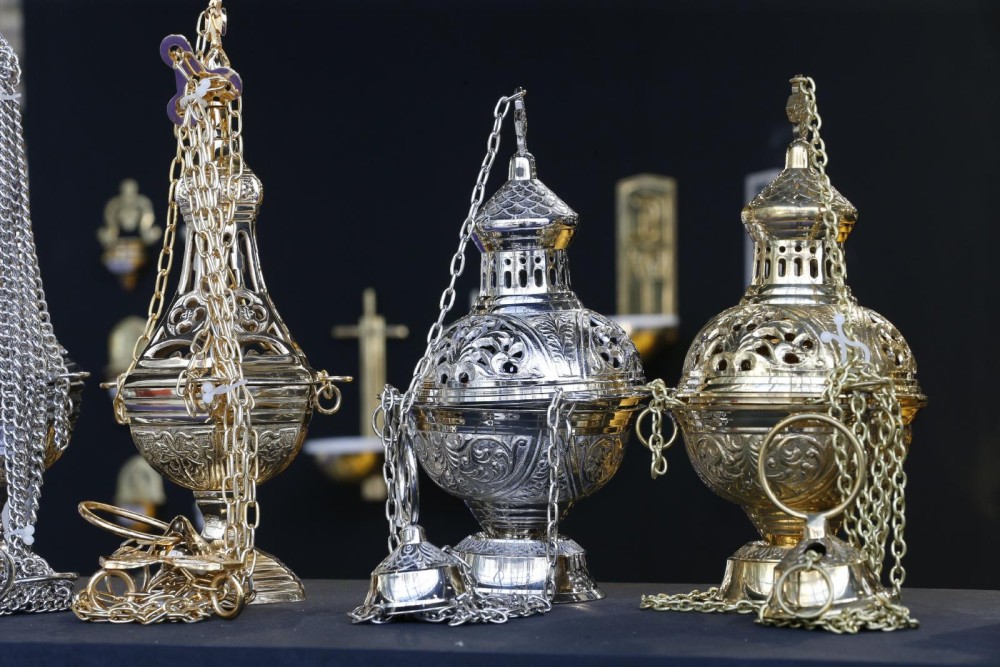
PROSPECT HEIGHTS — Wisps of fragrant incense have slowly twisted toward heaven since the early days of Christianity.
But incense is not just a thing or a noun.
As a verb, to “incense” an object, such as a Bible before the Gospel reading, is an act of purification and sanctification. Even people, living or dead, can be covered with this holy smoke.
Father Alonzo Cox, director of the Diocese of Brooklyn’s Liturgy Office, said the use of incense acknowledges something that is holy.
This is why, he added, incense is used at Mass or whenever we adorn the Blessed Sacrament. “It’s a symbol of our prayers being raised up to the heavens,” he said, “knowing that we are in the presence of something that is very holy.”
Ancient cultures, like the Egyptians, used incense to ward off evil spirits. But in the Book of Exodus, God told Moses to build a golden altar for the burning of incense (Exodus 30:1-3) in the temple.
King David enthusiastically followed that practice, writing, “Let my prayer be incense before you” (Psalm 141:2).
Incense subsequently carried over from Jewish tradition to the Christian liturgy.
Whenever used, the smoldering incense is deployed via a thurible. A priest, deacon, or altar server — the designated “thurifer” — often has help from a “boat bearer.” This usually is another altar server who carries a container of incense.
The person carrying the thurible spoons incense grains or powder from the boat onto red-hot charcoal or bricks inside the thurible.
Next, the vessel is closed, and the dispensing of incense begins as the thurifer swings the thurible by one or more small chains. The smoke envelopes objects or people, such as the consecrated Eucharist, a Paschal candle, a funeral casket, or the congregation at Mass.
The religious supply industry offers various incense formulas; among popular brands is the Melleray variety made by Trappist monks at their Nazareth Hermitage in Ava, Missouri.
Frankincense, a fabled gift from the Magi to the Baby Jesus, is one of its ingredients. This resin-like material is extracted from the trunks of Boswellia trees found in Africa or Middle East countries.
“It’s my go-to,” Father Cox said of the Trappists’ incense. “It has a sort of floral base. A majority of our parishes use that.”
But while incense is intended to be fragrant, some people say it bothers them.

Consequently, Blessed Sacrament Parish in Madison, Wisconsin, developed an “incense-use policy” to accommodate parishioners with “allergies and sensitivities to certain scents and smells.”
Thus, that parish has incense only at 11 a.m. Sunday Mass.
The Church gives pastors wide latitude in choosing incense times. For example, the Roman Missal — the handbook for Roman Catholic liturgy — has 12 directives “if incense is used.”
Father Cox, pastor of St. Martin de Porres Parish in Bedford Stuyvesant, said some pastors in the diocese use incense at each Sunday Mass, but he is not among them.
“During the Easter season and Christmas season, we use it at all of the Masses,” he said. “But right now, during the summer, during ordinary time, we would rarely use incense.”
Father Cox called this decision “practical.”
“Usually, altar servers would assist with incense at Mass,” he explained. “But during the summer, when everybody takes off, I have very few altar servers.”
Still, scripture confirms God is — and always will be — pleased when incense floats to heaven. St. John reported such imagery in his forecast of eternity — the Book of Revelation.
Here, an angel holds “a great quantity” of incense on the “gold altar that was before the throne.” Next, “The smoke of the incense, along with the prayers of the holy ones, went up before God.” (Rev. 8:5-8).
